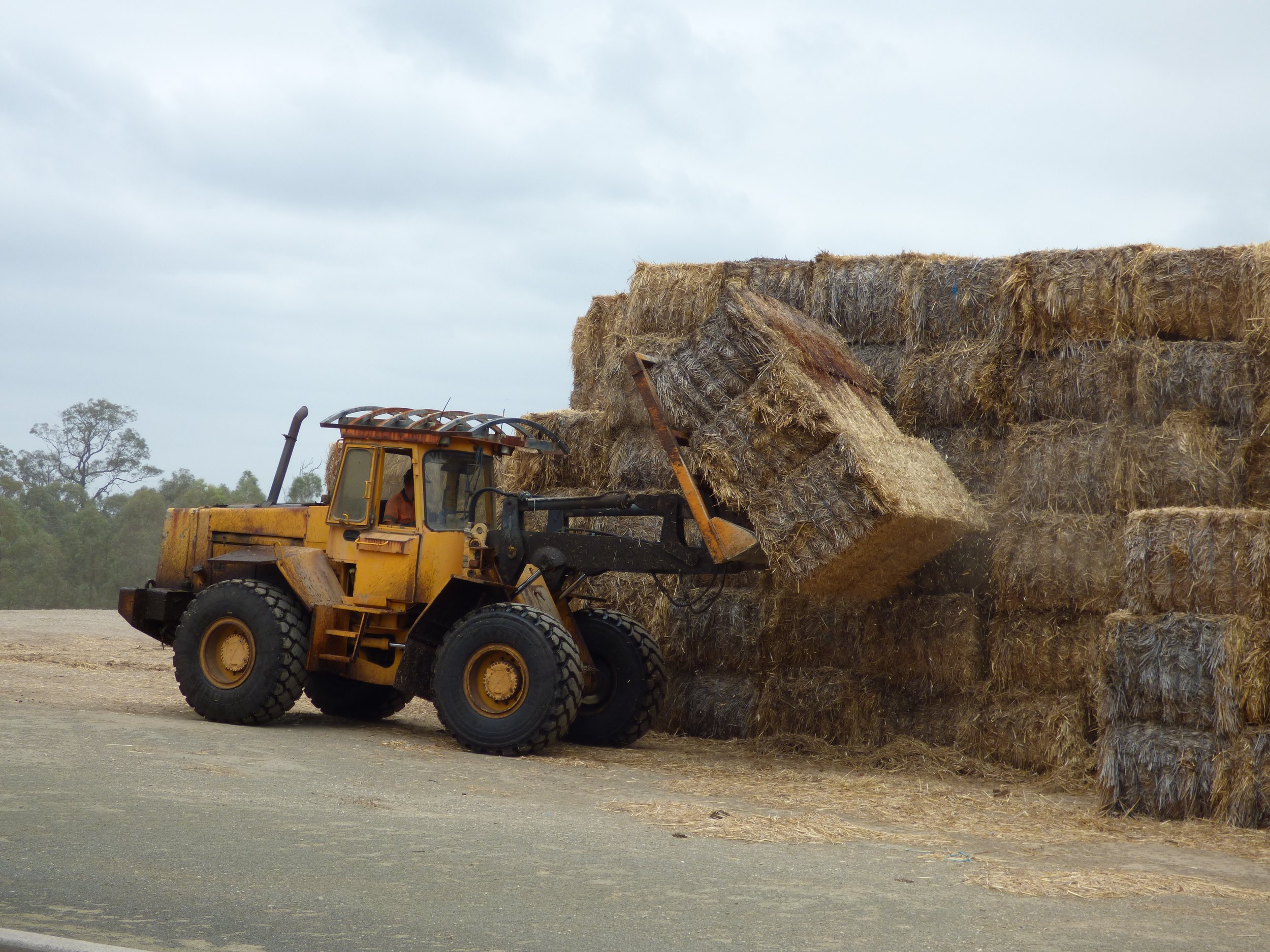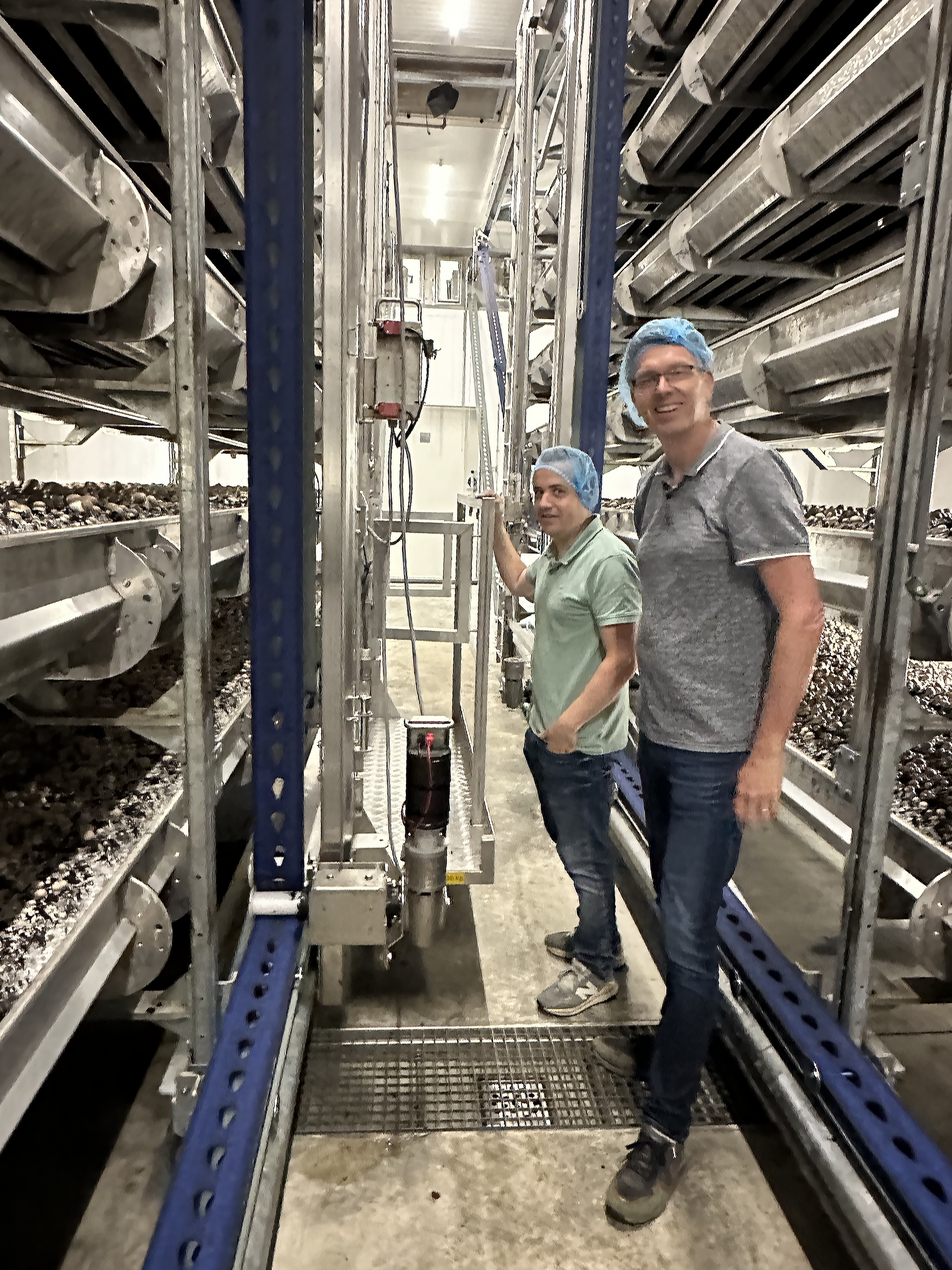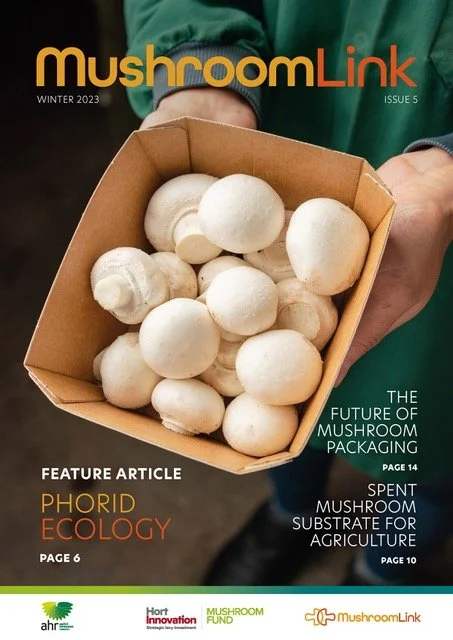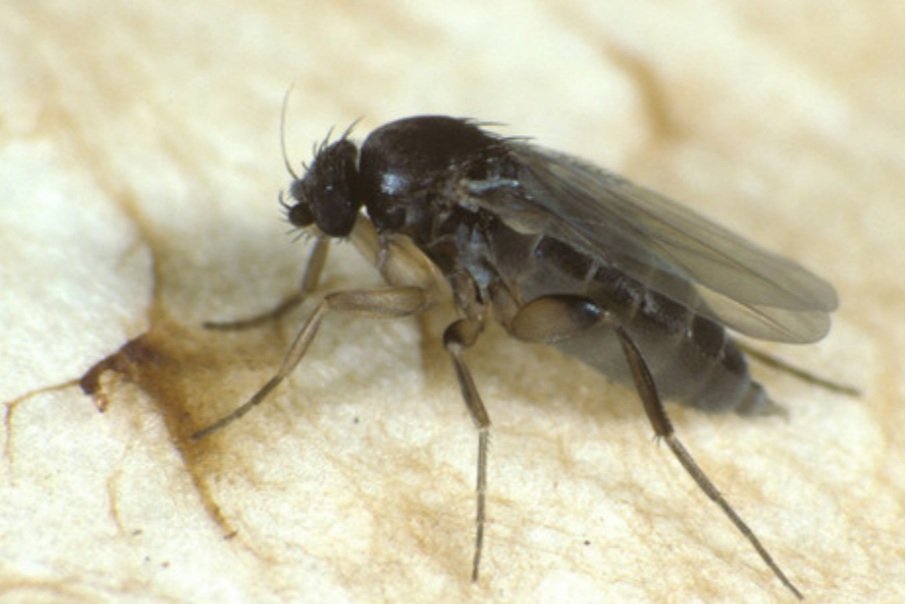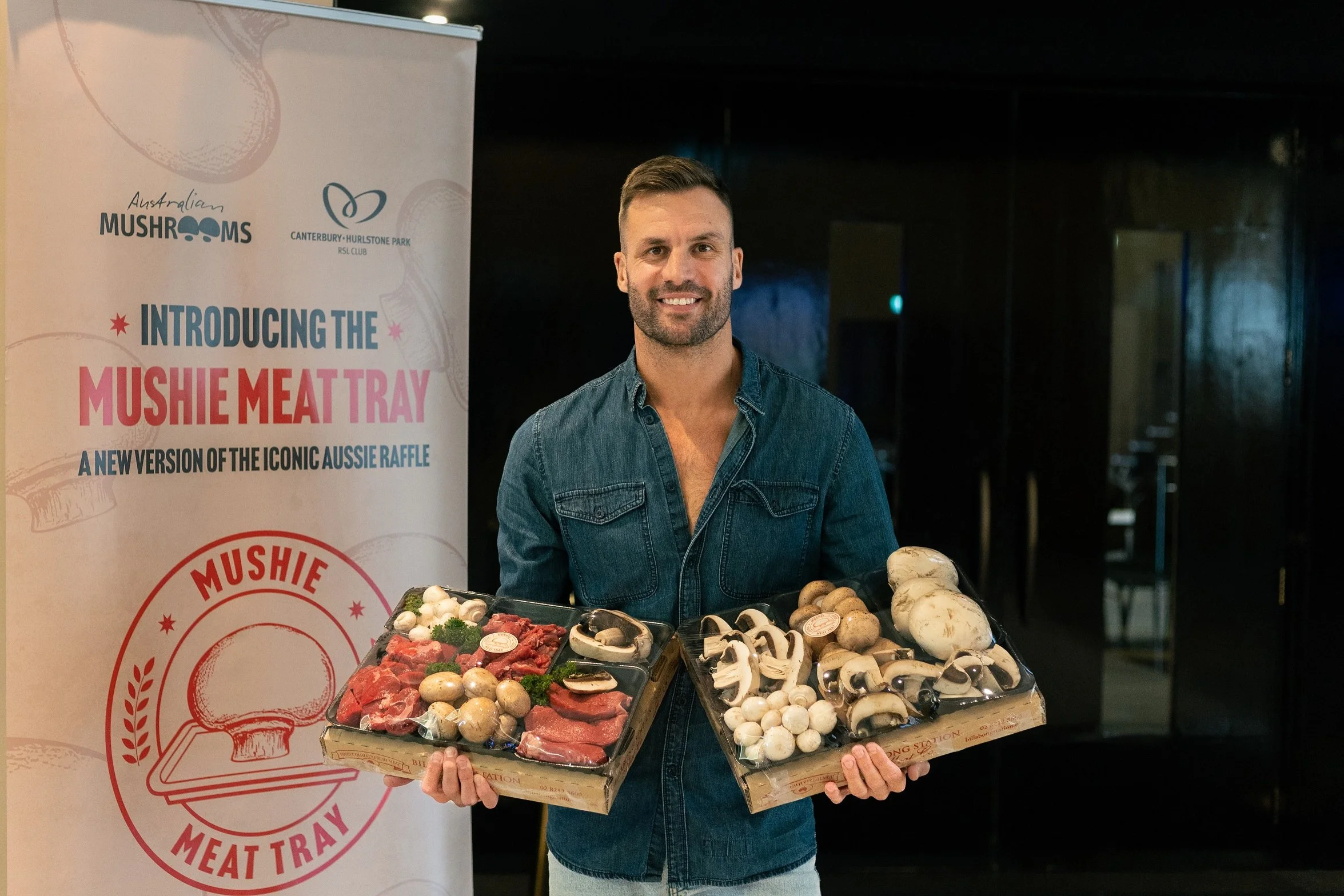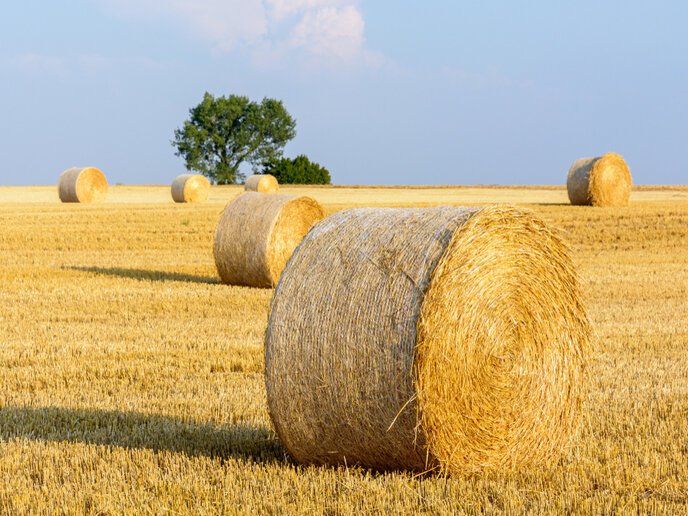The story behind swarming red pepper mites
Red pepper mites (RPM) are tiny 8-legged spider-like creatures that can be seen without magnification particularly when they swarm on the top of casing and /or mushrooms.
In literature the Australian species of RPM is identified as Siteroptes mesembrinae. You will also see the descriptor Siteroptes mesembrinae syn Pygmephorus mesembrinae.
This article was originally produced for the Australian Mushroom Journal 2020 Issue 3
MushroomLink Bulletin August 2023
In this edition:
Feature: The future of mushroom packaging
Feature: A lifecycle analysis for the mushroom industry
Webinar: A scoping study to review fungi-based global innovations
Podcast: Geoff Price and the American mushroom industry - part one
Resource: Mushroom Virus X Syndrome
Event: November webinar - save the date
MushroomLink Bulletin July 2023
In this edition:
Feature: Making a vitamin D claim.
Feature & webinar: Spent mushroom substrate
Feature: Improving the food industry menu with mushrooms
Podcast: Going Dutch - New mushroom technology from the Netherlands
Resource: Troll doll fact sheet
Event: November webinar - save the date
Going Dutch: New mushroom technology from the Netherlands
Tom Peeters GTL Europe
Recently Dr Jenny Ekman visited the Netherlands where she spoke with GTL Europe's Tom Peeters.
Tom and Jenny talk about a new mushroom farm in the Netherlands and how new technology has been implemented. They discuss tilting shelves and transferable shelves and future-proofing packing to be consistent with new robotics.
This podcast is part of the Hort Innovation funded project MU21003: Mushroom industry communications programme. It was funded through the Mushroom levy fund and contributions from the Australian Government.
A tilting shelf system
Tom Peeters (Left) and Denis (Right)
MushroomLink Bulletin June 2023
In this edition:
Winter magazine out now
Feature: Phorid ecology and management
Food safety FAQ’s
Podcast – Revisit our podcast on risk management
Marketing: Mushroom meat tray
MushroomLink Magazine Issue 05
The MushroomLink magazine Autumn edition is available now online. If you’re not yet receiving our magazine, subscribe here for your e-copy.
Articles:
Food Safety FAQs - your questions answered
Clare Hamilton-Bate has had more to do with food safety certification than just about anyone in Australia. Clare has also been an advisor to the mushroom industry for over 10 years. MushroomLink recently talked to Clare about tips and traps for QA managers on mushroom farms.
A visit from the auditor has been known to strike fear into the heart of even the most organised mushroom business QA manager. This is not necessarily because records are not in order, or practices are in any way unsafe. It has more to do with uncertainty about the process itself. People may wonder “What will the auditor ask?” “What evidence will I need to provide?” “What haven’t I done?” “What do I do if I get a lot of corrective actions?”. It can be like going for an exam without knowing the scope of the subject. Clare Hamilton-Bate has had more to do with food safety certification than just about anyone in Australia. Clare has also been an advisor to the mushroom industry for over 10 years. MushroomLink recently talked to Clare about tips and traps for QA managers on mushroom farms.
The future of mushroom packaging
As consumers and regulators become increasingly concerned about sustainability, the Australian mushroom industry needs to explore alternative packaging solutions to meet the growing demand for environmentally friendly products. With fewer than 50 commercial growers, the mushroom industry has the opportunity to adopt sustainable packaging solutions across the board, positioning itself as a leader in Australian horticulture.
As consumers and regulators become increasingly concerned about sustainability, the Australian mushroom industry needs to explore alternative packaging solutions to meet the growing demand for environmentally friendly products. With fewer than 50 commercial growers, the mushroom industry has the opportunity to adopt sustainable packaging solutions across the board, positioning itself as a leader in Australian horticulture.
Improving the food industry menu, with mushrooms
A collaboration between Nutrition Research Australia (NRAUS) and the AMGA is working hard to show the benefit of adding mushrooms to the menu, not only to improve the palatability of institutional meals, but to boost their nutritional offering as well. Initial research reveals the Australian food industry has a lot more to learn about the health benefits of the mighty mushroom, with taste and culinary benefits overshadowing the vast nutritional benefits of mushrooms in the nationally accredited commercial cookery curriculum.
A collaboration between Nutrition Research Australia (NRAUS) and the AMGA is working hard to show the benefit of adding mushrooms to the menu, not only to improve the palatability of institutional meals, but to boost their nutritional offering as well. Initial research reveals the Australian food industry has a lot more to learn about the health benefits of the mighty mushroom, with taste and culinary benefits overshadowing the vast nutritional benefits of mushrooms in the nationally accredited commercial cookery curriculum.
A life cycle analysis of the mushroom industry
It’s one thing to claim sustainability, and quite another to prove it. A new R&D levy-funded project is bringing ‘life cycle thinking’ to the Australian mushroom industry, which will highlight the strengths and weaknesses in mushroom sustainability across the industry. With recent media attention and a new investigation by the ACCC exposing greenwashing, it is more important than ever to understand the real impact of a business and the effectiveness of any sustainability measures.
It’s one thing to claim sustainability, and quite another to prove it. A new R&D levy-funded project is bringing ‘life cycle thinking’ to the Australian mushroom industry, which will highlight the strengths and weaknesses in mushroom sustainability across the industry. With recent media attention and a new investigation by the ACCC exposing greenwashing, it is more important than ever to understand the real impact of a business and the effectiveness of any sustainability measures.
Exploring the potential of spent mushroom substrate for sustainable agriculture
To maintain consumer appeal and a competitive edge, business must strive for that magical triple bottom line of social, economic and environmental sustainability. Striking that balance is an ongoing challenge due to a fickle global economy and increasingly unpredictable weather patterns.
To maintain consumer appeal and a competitive edge, business must strive for that magical triple bottom line of social, economic and environmental sustainability. Striking that balance is an ongoing challenge due to a fickle global economy and increasingly unpredictable weather patterns.
Can you claim vitamin D on mushrooms?
Vitamin D deficiency is an increasing public health problem in Australia, with almost a quarter of Australians deficient. Mushrooms provide a unique solution to address this deficiency and would lend some ‘nutrition heft’ to any marketing campaign. However, before claims can be made about vitamin D, it is necessary to take a closer look at the vitamin and the specifics of the food regulations.
Vitamin D deficiency is an increasing public health problem in Australia, with almost a quarter of Australians deficient. Mushrooms provide a unique solution to address this deficiency and would lend some ‘nutrition heft’ to any marketing campaign. However, before claims can be made about vitamin D, it is necessary to take a closer look at the vitamin and the specifics of the food regulations.
Phorid Ecology and Management
Flies in mushroom crops are a persistent, annoying, and occasionally, very damaging issue that all growers will face at some time. Most research has focussed on sciarids (Lycoriella spp.), often the most common species present. The maggots feed on organic matter in compost and readily adapt to captivity, making research relatively easy. Mushroom phorid flies may be a minor problem on most Australian farms, but in many countries – including Spain, Turkey, India, the UK and the US – they are a major pest. Yield losses of 10 to 40% have been widely reported. Some Australian farms are now also reporting persistent populations of these flies.
Flies in mushroom crops are a persistent, annoying, and occasionally, very damaging issue that all growers will face at some time. Most research has focussed on sciarids (Lycoriella spp.), often the most common species present. The maggots feed on organic matter in compost and readily adapt to captivity, making research relatively easy. Mushroom phorid flies may be a minor problem on most Australian farms, but in many countries – including Spain, Turkey, India, the UK and the US – they are a major pest. Yield losses of 10 to 40% have been widely reported. Some Australian farms are now also reporting persistent populations of these flies.
Sustainable pest and disease management
Pest and disease outbreaks pose a risk to any horticultural business, and the Australian mushroom industry is no exception. Outbreaks can result in significant financial losses for the grower, and broader reputational damage to the sector as a whole.
As consumers increasingly demand produce that is clean and green, a sustainable approach to pest and disease management will help protect market access for the industry into the future.
A new Hort Innovation project, led by Dr Aimee McKinnon from Agriculture Victoria, investigates effective alternatives to complement current pest and disease management strategies for the mushroom industry.
Read full article in MushroomLink Issue 4
National mushroom virus survey - update
The vast majority of mycoviruses – the viruses which are naturally widespread throughout both cultivated and wild fungi – cause no problems to their host. But occasionally, combinations of virus particles interact, causing quality and yield issues.
Pathogenic viruses can be hard to detect in mushroom crops. They can replicate unseen and undetected, establishing large disease reservoirs on-farm. Early symptoms can go unnoticed or be ignored. For example, sporadic brown mushrooms appearing in white button crops being dismissed as just ‘one of those things’.
The delay in identifying the causal ‘organisms’ was one of the key factors leading to the devastating impacts of MVX Syndrome in Europe. Early detection and appropriate intervention is key to successfully mitigating the effects of these serious pathogens.
Australia has a long history of virus disease. La France was first recorded in this country in 1969 and there have been sporadic damaging outbreaks recorded over the years.
In 2021 a farm reported a disorder expressing La France-like symptomology. However, samples sent to an external diagnostic laboratory did not detect the La France virus. A second sample was tested for Mushroom Virus X (MVX) Syndrome viruses. This test detected the AbV6 virus particle, which is associated with MVX Syndrome.
A preliminary survey of mushrooms from supermarkets, together with selected farm samples, provided results consistent with the findings from the farm outbreak samples. After consultation with Dr Helen Grogan (Teagasc in Ireland, the leading authority on MVX Syndrome), and discussions with the MU16003 project reference group, it was decided to offer a nation-wide survey to the industry to determine the extent of virus contamination in Australian button mushroom crops.
Read the full report from the Pest and Disease Team, Dr Warwick Gill and Judy Allan in MushroomLink Issue 2
It’s a wrap on MU16003 Pest and disease management and research services
Over the last five years, Warwick Gill (University of Tasmania) and Judy Allan have led the levy funded project MU16003 Pest and disease management and research services, creating an exhaustive and detailed body of knowledge for the Australian mushroom industry.
The team have researched and collated information on current and emerging mushroom pests and pathogens, as well as how to recognise, treat and manage them. They have also focussed strongly on communicating their findings through a variety of engaging formats. The legacy is an impressive and invaluable information resource.
Most of the resources created through the project are available via the AGORA website (agora.australianmushrooms.com.au, note that this is password protected), with a few highlights presented here.
Read more about their research highlights and top tips in MushroomLink Issue 1
Meat trays get a mushroom makeover
Meat raffles are a cultural icon in many Australian pubs and clubs but in April the traditional raffle was turned on its head.
Hort Innovation, through the mushroom marketing fund, partnered with Australian Mushrooms to launch what is believed to be the world’s first Mushie Meat Tray. Complete with butcher-quality cuts of portobellos, buttons, flats and cups, alongside the usual sausages and steaks, this is the flexitarianism meets Aussie pub culture at its finest.
Former rugby league footballer, television presenter and RSL club enthusiast Beau Ryan launched the Mushie Meat Tray at the Canterbury-Hurlstone Park RSL Club in Sydney.
Patrons on the night enjoyed mushroom-inspired versions of classic Aussie dishes, including mushroom parmigiana, mushroom risotto, and mushroom burgers. Combined meat and mushroom - or mushroom only - trays (25 in total) were raffled on the night.
Hort Innovation marketing manager, Emma Day, said research had revealed that more than 70% of Australians head to their local RSL for their chance to win the meat raffle and more than a quarter of Australians would much rather win an RSL meat tray than go surfing at Bondi Beach.
The team behind the campaign are delighted with the media buzz surrounding the event.
“To date, we have secured more than 100 pieces of coverage, providing more than 60 million opportunities to reach Australians,” Ms Day said.
“We received coverage on platforms and in publications such as News.com.au (Australia’s leading news site), Sunrise (Australia’s number one TV breakfast show) and Man of Many (Australia's largest men's lifestyle site). We also secured an interview with Australian Mushrooms grower Chris Tolson, with the North Queensland Register piece syndicated across six titles.
“On launch day, we secured an opportunity with breakfast TV show Sunrise. During the five minute live cross from the Canterbury RSL, Beau Ryan explained what the Mushie Meat Tray was, talked to our key messaging and mentioned Australian Mushrooms on multiple occasions. The clip syndicated 44 times nationally.
“To further drive our social media presence, we launched an Instagram competition to encourage different community groups to apply to win their very own Mushie Meat Trays. To enter, fans had to comment on why they thought their community group deserved to win trays to auction off. This garnered more than 700 entries.”
The trays are now set to be rolled out nationwide, with Australian Mushrooms launching a toolkit to help RSL clubs create their own take on the Mushie Meat Tray, and RSL clubs in both Queensland and Victoria have answered the call.
Over 70,000 shoppers engaged during in store sampling program
The Mushroom In-Store Sampling Program (MU21503) has reached over 70,000 shoppers in supermarkets across the nation. The program, conducted throughout 2022, has delivered important insights into consumer attitudes, which will help inform future marketing strategies.
The program, funded by Hort Innovation through the mushroom marketing levy, aimed at increasing the domestic demand for Australian mushrooms. With close to 50,000 samples consumed during the campaign period, and more than 70,000 shoppers exposed at 617 stores across the nation, the data provides a reliable information into current drivers and barriers to purchase.
Taste (58 per cent) and versatility (31 per cent) are the dominant factors that made mushrooms appealing to customers. Texture (seven per cent) and price (three per cent) were other factors influencing purchase of mushrooms.
Conversely, price (40 per cent) and a dislike for mushrooms (21 per cent) were the main factors deterring mushroom purchase and consumption among those customers who were questioned.
Twenty per cent of customers questioned during the campaign, which ran from August to December 2022, indicated that they were not deterred from purchasing mushrooms by any factors.
The Mushroom In-Store Sampling Program was endorsed by the Mushroom SIAP to drive category growth with point of purchase conversion by inspiring shoppers with delicious and easy mushroom recipes to taste while in store.
“How do we inspire consumers to consider and use mushrooms more often?”
With 49 per cent of Australian households deciding on their dinner menu last minute (an all-time high), the campaign took the opportunity to remind shoppers that mushrooms would make a great dinner idea. The campaign took place on the busiest retailer days of the week and timeframes for greatest impact.
To maximise any benefit from impulse purchasing, promoting an inspiring recipe – together with other messages around versatility - was recognised as key.
The campaign aimed to:
Increase awareness of versatility of mushrooms by promoting healthy eating without the hassle
Encourage trial purchase of Aussie Mushrooms
Communicate versatility, ‘blendability’, usage scenarios and hand out recipe leaflets
Communicate key selling messages
Highlight where the products can be located in-store
Encourage customers to buy directly from the promotional table
Leave customers with a positive brand experience.
The campaign involved static in-store sampling through which shoppers were invited to taste two mushroom recipes – vegetarian meatballs and mushroom mini-toast – which were prepared and sampled in-store by Australian mushroom brand ambassadors.
Vegetarian meatballs were chosen as a popular family meal that taps into the growing trend for people to reduce the amount of meat in their diets. The mushrooms on toast recipe aligns with the AMGA-run Café Culture foodservice campaign, #mymushroomtoast.
A total of 68% of shoppers interacted with were converted into trying a sample, with 52% indicating that they intended to buy the product after consuming a sample.
More than 12,000 manually counted units of pre-packaged mushroom products were sold during this period, in addition to 5624 kilograms of loose mushrooms.
Northbridge (NSW), Marrickville (NSW), Gordon (NSW) and Springwood (Qld) were among the highest sampled stores.
Jamison (ACT), Blacktown (NSW) and Dapto (NSW) recorded the highest pre-packed sales. Dickson (ACT), Heidelberg (Vic) and Dee Why (NSW) recorded the highest loose sales.
Other topline insights from the campaign included:
75% of customers thought about the product prior to trial
Consumers were very receptive to sampling the products and the majority of customers spoke favourably of mushrooms as a vegetarian option at mealtimes
The aroma of garlic and mushrooms throughout the store encouraged sampling
Promotional materials with a QR code link to the recipes provided a significant talking point and caught the attention of many samplers
Brand ambassadors reported that some samplers shared that they would be buying all ingredients to make the meatballs or mini toast for themselves and/or their family
In terms of negative feedback, the most common barriers to sampling were customers who did not like mushrooms or those allergic to mushrooms.
Due to the success of the 2022 program, the Mushroom SIAP has endorsed another round of sampling in the second half of FY23, starting in March.
This article was originally published in the MushroomLink magazine issue 04 (28 March 2023). Click here to view the full publication.
Marketing update – mushroom in-store sampling
When it comes to planning dinner, nearly half of Australian cooks are last minute Larrys, providing the perfect opportunity to remind shoppers of the wonders of mushrooms as they do their dinner shopping.
With this key statistic in mind, the Hort Innovation marketing team developed the Mushroom In-Store Sampling Program.
Capitalising on the prevalence of impulse buyers in Australian supermarkets, mushroom ambassadors were at the ready to inspire eager shoppers with mouth-watering aromas, delicious tasting samples, and simple recipes to cook at home that night.
The in-store sampling, part of the levy-funded MU21503 project, was endorsed by the Mushroom SIAP to drive category growth with point of purchase conversion by inspiring shoppers with easy mushroom recipes to taste while in store.
The overall objective of the campaign is to contribute towards the FY22 Australian Mushrooms Brand vision to push long term domestic growth for the mushroom category.
The initiative is part of an effort to make Australian mushrooms a staple ingredient in the Australian home by driving increased consideration and frequency of purchase, and answer the underlying question:
“How do we inspire consumers to consider and use mushrooms more often?”
Emma Day, marketing manager at Hort innovation, explains that this initiative is part of a four pillar plan that underpins the mushroom marketing strategy (see MushroomLink, Issue 1 Winter 2022, page 19 for the full marketing strategy).
“This project is part of our Pillar 3 Win in Retail, which aims to increase the visibility of mushrooms in retail settings,” she said.
“In addition to in-store sampling, other elements of Pillar 3 include in-store advertising, online shopping advertising and out of home (OoH) advertising panels on the path to purchase, i.e., close to, or inside of, retail stores.
“As the project runs until the end of the year, we are still collecting data, but customer feedback has been very positive,” Emma added.
The in-store sampling program (10am-2pm) and (3pm-7pm) ran across the country (except Northern Territory) in Woolworths and Coles stores. Demonstration tables, branded with Australian mushrooms imagery, also contained additional marketing collateral including business cards and a QR code linked to the Australian Mushrooms website for more mushroom recipes.
Australian Mushroom Brand Ambassadors prepared two recipes, namely vegetarian ‘meatballs’ and mushroom mini toast. Australian families love meatballs, and this vegetarian version taps into the growing trend for people to reduce the amount of meat in their diets.
The mushrooms on toast recipe aligns with the AMGA-run Café Culture foodservice campaign, #mymushroomtoast, recently won by the Guyala Café in Cairns.
A total of 276 in-store sampling sessions have been completed thus far, with sessions ramping up toward Christmas to complete 600 in total by end of 2022.
The current results are as follows:
Total samples: 23,736
Total interactions: 32,568
Average samples per session: 86 (Target: 80)
Average interactions per session: 118 (Target: 115)
Customer feedback suggests that they love the vegetarian options and the aroma of the garlic and mushrooms throughout the store, which encourages tasting. The business and stand-up cards have been very successful as many samplers are interested in the recipes for the meatballs and mini toasts.
Brand Ambassadors have also been encouraging samplers to look through the “recipes” tab to view these recipes and many others, which highlight the versatility of mushrooms. This has been a key talking point among all sessions.
This article was originally published in the MushroomLink magazine Issue 03 (December 2022). Click here to view the publication.
MushroomLink Bulletin May 2023
In this edition
Free service: Order your free Smart Mushroom testing kit now
Feature: Bacteriophages in compost – friend or foe
Feature: Sustainable pest and disease management
Podcast: Catchup with the team behind Mycionics
Webinar: Recycling SMS for fertiliser in a circular economy
MushroomLink on the road: Visit us at Hort Connections




